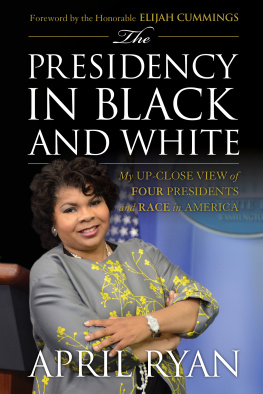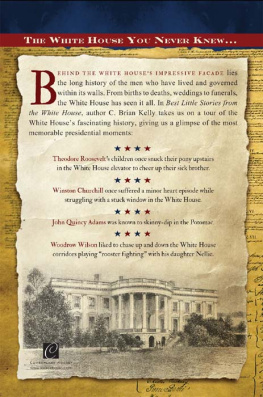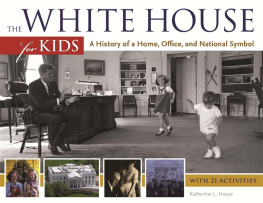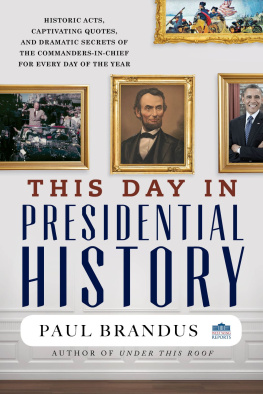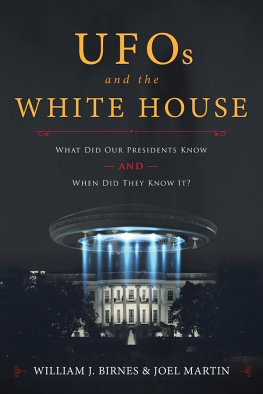Brandus - Under This Roof: The White House and the Presidency--21 Presidents, 21 Rooms, 21 Inside Stories
Here you can read online Brandus - Under This Roof: The White House and the Presidency--21 Presidents, 21 Rooms, 21 Inside Stories full text of the book (entire story) in english for free. Download pdf and epub, get meaning, cover and reviews about this ebook. year: 2015, publisher: Lyons Press, genre: Detective and thriller. Description of the work, (preface) as well as reviews are available. Best literature library LitArk.com created for fans of good reading and offers a wide selection of genres:
Romance novel
Science fiction
Adventure
Detective
Science
History
Home and family
Prose
Art
Politics
Computer
Non-fiction
Religion
Business
Children
Humor
Choose a favorite category and find really read worthwhile books. Enjoy immersion in the world of imagination, feel the emotions of the characters or learn something new for yourself, make an fascinating discovery.

- Book:Under This Roof: The White House and the Presidency--21 Presidents, 21 Rooms, 21 Inside Stories
- Author:
- Publisher:Lyons Press
- Genre:
- Year:2015
- Rating:3 / 5
- Favourites:Add to favourites
- Your mark:
Under This Roof: The White House and the Presidency--21 Presidents, 21 Rooms, 21 Inside Stories: summary, description and annotation
We offer to read an annotation, description, summary or preface (depends on what the author of the book "Under This Roof: The White House and the Presidency--21 Presidents, 21 Rooms, 21 Inside Stories" wrote himself). If you haven't found the necessary information about the book — write in the comments, we will try to find it.
- Why, in the minutes before John F. Kennedy was murdered, was a blood-red carpet installed in the Oval Office?
- If Abraham Lincoln never slept in the Lincoln Bedroom, where did he sleep?
- Why was one president nearly killed in the White House on inauguration dayand another secretly sworn in?
- What really happened in the Situation Room on September 11, 2001?
History leaps off the page in this riveting, fast-moving and highly entertaining book on the presidency and White House in Under This Roof, from award-winning White House-based journalist Paul Brandus. Reporting from the West Wing briefing room since 2008, Brandusthe most followed White House journalist on Twitter (@WestWingReport)weaves together stories of the presidents, their families, the events of their timeand an oft-ignored major character, the White House itself.
From George Washingtonwho selected the winning design for the White Houseto the current occupant, Barack Obamathe story of the White House is the story of America itself, Brandus writes. Youll:
- Walk with John Adams through the still-unfinished mansion, and watch Thomas Jefferson plot to buy the Louisiana Territory
- Feel the fear and panic as British invaders approach the mansion in 1814and Dolley Madison frantically saves a painting of Washington
- Gaze out the window with Abraham Lincoln as Confederate flags flutter in the breeze on the other side of the Potomac
- Be in the room as one president is secretly sworn in, and another gambles away the White House china in a card game
- Stand by the presidential bed as one First Ladycovering up her husbands illness from the nationsecretly makes decisions on his behalf
- Learn how telephones, movies, radio, TV changed the presidencyand the nation itself
Through triumph and tragedy, boom and bust, secrets and scandals, Brandus takes you to the presidential bedroom, movie theater, Situation Room, Oval Office and more. Under This Roof is a sensuous account of the history of both the home of the President, and the men and women who designed, inhabited, and decorated it. Paul Brandus captivates with surprising, gloriously raw observations.
Brandus: author's other books
Who wrote Under This Roof: The White House and the Presidency--21 Presidents, 21 Rooms, 21 Inside Stories? Find out the surname, the name of the author of the book and a list of all author's works by series.

